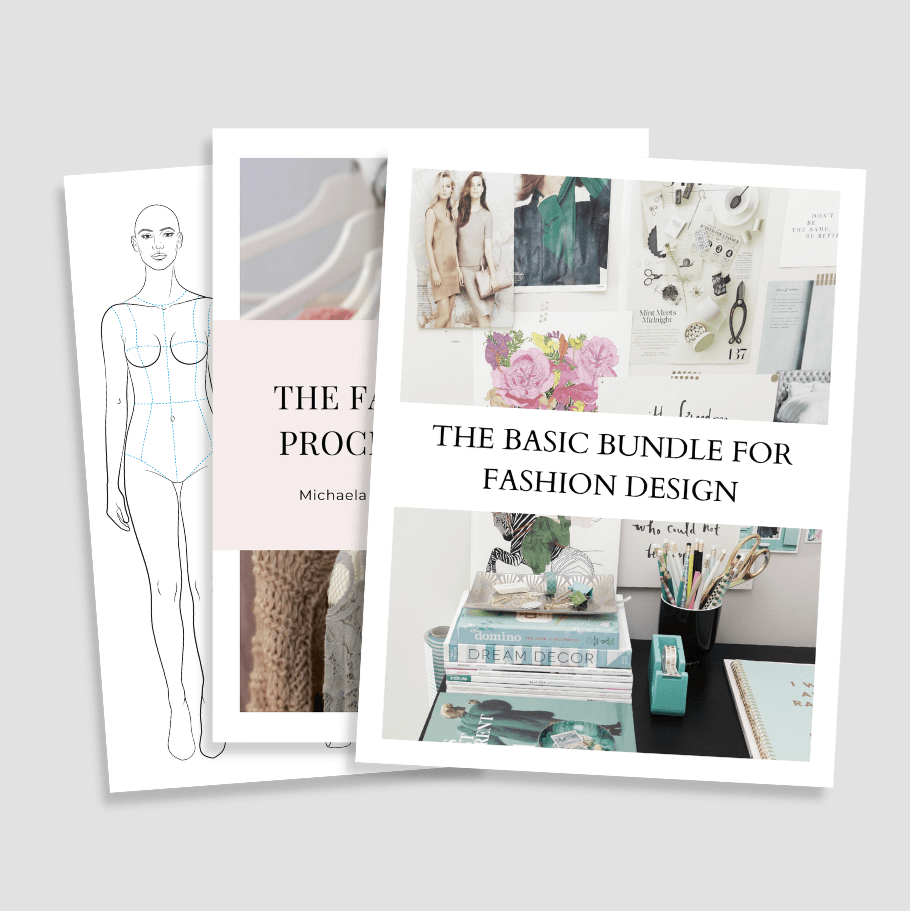Your Free Gift The Basic Bundle for Fashion Designers
Your Free Gift The Basic Bundle for Fashion Designers

I have an obsession with historical fashion, especially Victorian gowns. I found a picture in a magazine with a girl wearing Victorian corsets and undergarments. So I thought, if I add a lace shawl, it will turn out to be a great design for demonstrating how to illustrate cotton fabrics and lace.
From the 1830s skirts became fuller and women wore a profusion of petticoats decorated with broderie Anglaise, tucking, and lace to achieve a fashionable bell shape. Still, with the birth of the crinoline frame in 1856, only one or two petticoats were necessary. The corset was usually worn over the chemise- a thin shirt-like shift of cotton or muslin. Throughout this period women’s underwear was made of linen or cotton.
Cotton and linen are cool, comfortable, strong, and durable fabrics that wrinkle easily. They have good color retention and are good to print on. Here I lay on a base in white and drew in the shadows while the paper was still wet. I blended them out with a clean brush to avoid any harsh lines because cotton and linen fabrics are rather soft and dull. For the shadows on the petticoat and the chemise, I used a greyish purple tone to achieve smoothness in the fabric as if it’s almost transparent and as if the light is shining through. The fabric of the petticoat drapes in soft graceful folds.
The corset in contrast is stiff and tight-laced. It was often made of whalebone and silk, satin, or cotton. That’s why the shadows there are stronger and deeper. For the corset, I used deep grey color.

The most important detail in fashion work is lace. Its representation requires selection. Pick out the most important lines of the pattern, slightly exaggerate them, and keep the remainder in the background. A good plan, especially for the beginner, is to draw the pattern in Indian ink, and, when dry, put a dark wash of black paint or ink and water over it. When dry the pattern can be seen through the wash and can be painted with white paint or Chinese white. When the lace is in folds, as in flounces, the folds should be first worked up in the same manner as black material, then the pattern put on in white or black depending on if it’s embroidered muslin, broderie anglaise, black lace, braid or other patterned material. The parts in shadow should be worked in grey. I worked up the masses of light and shade and once the fabric looks transparent and three-dimensional I drew in the lace pattern.
Lace works similarly to sheer fabrics. When the lace is double, it is enough to show this by deepening the tone. I completely filled in the whole shawl with a light grey tone. The skin tone is shining through, where the fabric touches the skin, and the true dark tone shows at the places where the fabric is wrapping around the body and in the folds, where they are double. Work as soft as possible with thick edges, avoid sharp lines.
In representing patterned materials, a good idea of the whole pattern should be given; but it is often impossible to put in the whole of the pattern, this again being a case of selection. After drawing in the lace pattern, you can go and blend it with a color few tones lighter than the ink you used to simplify the whole otherwise your drawing may look overdone.
As always, thank you so much for reading, watching, and sharing so generously. Tell me more about your favorite era in fashion history in the comments below!
if you liked this post, you'll PROBABLY be into these—
Business tools, art materials, equipment
You wanna see my secret weapons for running my biz and creating art? Here is a sneak peek at what’s happening behind-the- scenes at Fashion ARTventures.
This is everything I have used and loved, from my art techniques and software, to my filming equipment and platforms that help me run my biz !


THE BASIC BUNDLE is a collection of female fashion templates in the most essential poses + the fashion design process checklist and the fashion figure proportion scale for sketching the croquis freehand.
Grab your favorite paints or your iPad, put on some chill tunes, find a cozy spot, and let us take you on a journey full of ARTventures! As you color, you’ll be practicing your artistic skills, exploring color combinations, and improving your eye for design.